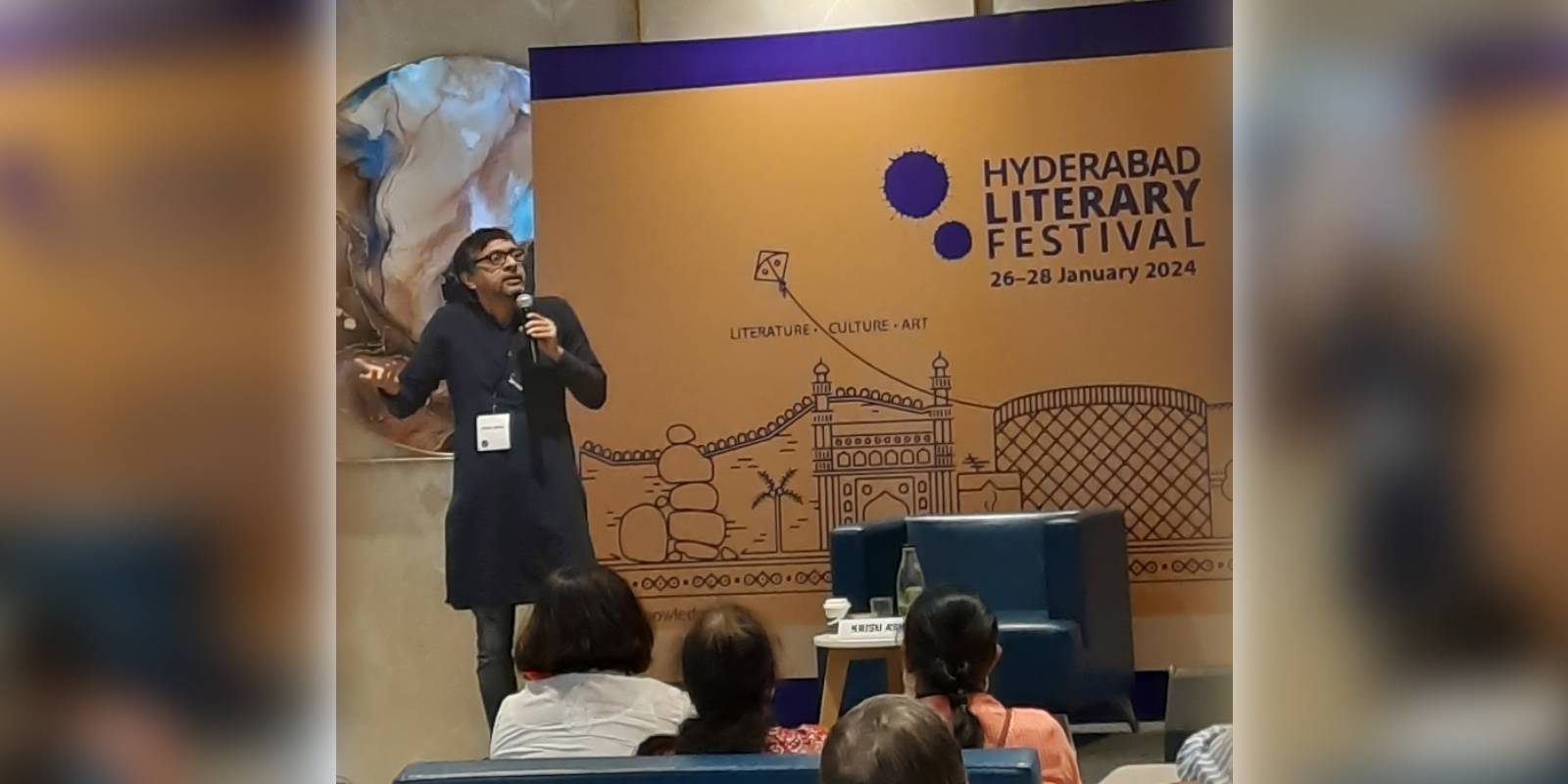The author ended his talk by saying that the crux of the Biryani chapter in his book Masala Lab was based on Hyderabad.

Krish Ashok at the HLF.
Hyderabad should build a memorial for the meteor that hit the earth billions of years ago, says Krish Ashok at the Hyderabad Literary Festival (HLF), on the final day of the fest.
Krish Ashok, author of the book Masala Lab, was speaking about the evolution of hens as an aftermath of the Cretaceous–Paleogene extinction event that happened 65 billion years ago. The evolution of hens eventually after centuries led to the creation of the dish called Chicken Biryani, which every Hyderabadi prides in, he informed the discerning audience.
The author, who is a software engineer, says, he is not a chef but cooks daily. He is not a scientist, but he can explain science with easy-to-understand clarity. His 744K followers on Instagram will perhaps vouch for that.
Ashok was at HLF to talk about the science behind cooking, on Sunday, 28 January.
Ashok says he would like to focus on Chicken biryani, as a dish and recipe, particularly due to its prominence in Hyderabad. “Unlike pulav and other rice dishes, biryani originates in the Indian subcontinent,” he shared.
Speaking of the spices used in biryani, Ashok took the audience into the annals of history. “The spices — nutmeg, clove and others — used for the biryani were produced in South East Asia. The first world war, in a sense, was fought over the spices by the British and the Dutch,” he pointed out.
“The Dutch won the war, and in return lost something called ‘Manhattan’, though the British then eventually started cultivating the spices in Kerala,” he added.
There are around 700-800 varieties of biryani. “And if we were to believe a story, the biryani was perfected in the kitchens of Awadh,” he informed.
The author navigated the conversation with doses of science. He shared how the multicell organisms were formed three billion years ago, with the formation of mitochondria.
This eventually led to the evolution of various species and the evolution of humans.
“400 million years ago, another such event occurred where the cells learnt to produce food with the help of sunlight.”
“The cells had invented a molecule called chlorophyll that turned the sunlight to energy.” Every one of the humans is evolutionarily less advanced and ancient than a plant, he stated.
Circling back the association of evolution of plants to Chicken Biryani, Ashok detailed how plants have adapted themselves to survive by creating poison.
Giving an example of onions — a main ingredient in the biryani, he said, “When you cut an onion, what it essentially does is an acid attack, causing a burning sensation to the eyes.” When a hen is killed, all its cells die in one go, but the vegetables are alive when one cuts them in the kitchen, he indicated.
On a lighter note, the author joked, “So what vegetarians are doing is actually butchering the vegetables in their kitchens.”
Giving another example, of nutmeg, Ashok said that more than 5 g of nutmeg is poisonous, but the spice used in minimal quantity is the main aspect of a biryani.
Steering the conversation to the main ingredient of Chicken Biryani, Ashok explained, “When the meteor hit the earth, 95 percent of animal life was lost, what was left were water reptiles like crocodiles, small underground animals like rats, and birds.”
Eventually, a jungle fowl was domesticated and evolved into a chicken, which was then consumed as food, he shared.
If you are the @HydLitFest come by at 12.20 pm (at the Nanha Nukkad) and 3 pm (Octave 3) when I’m speaking pic.twitter.com/iONkGipza7
— Krish Ashok (@krishashok) January 28, 2024
Ashok also shared that food taboos have no scientific backing. They are just a method to hold cultural hegemony.
“Food is the easiest thing to control people. That is also how food taboos also came to be. When the head of a group or tribe says, a certain food is a taboo, it’s to assert control,” he noted.
“In the early days, when man was a hunter, I’m sure no one would have said, this particular food is a taboo. They ate whatever they found,” he pointed out.
“With the resurgence of social media and access, people are now aware of various food habits. Previously, people knew only about the habits of their geographic location or group,” the author concluded.
Masala Lab was released in 2020, and last year a graphic version of the book was released.

May 09, 2024

May 09, 2024

May 09, 2024

May 09, 2024

May 09, 2024

May 08, 2024